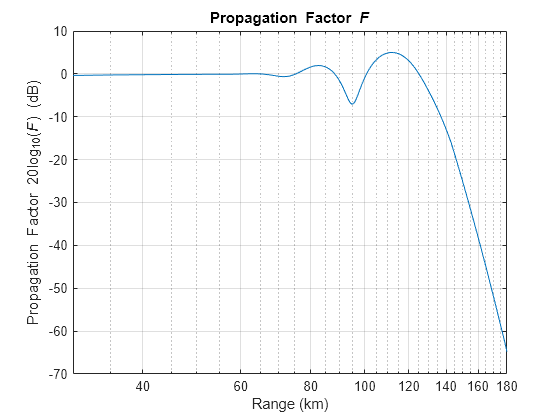radarpropfactor
Syntax
Description
F = radarpropfactor(R,freq,ANHT)0. The calculation estimates the complex relative permittivity
(dielectric constant) of the reflecting surface using a sea water model described in [1] that is valid from
100 MHz to 10 GHz. The target height is assumed to
be the height of significant clutter sources above the average surface height. Specifically,
the target height is calculated as 3 times the standard deviation of the
surface height. Assuming the paths are the same, the two-way propagation factor is
2F. Atmospheric refraction is taken into account through the use of
an EffectiveEarthRadius that can be specified. Scattering and ducting
are assumed to be negligible.
F = radarpropfactor(___,Name,Value)
radarpropfactor(___) plots the one-way propagation
factor in dB versus range in km. Default range units are km.
Examples
Input Arguments
Name-Value Arguments
Output Arguments
References
[1] Blake, L.V. "Machine Plotting of Radar Vertical-Plane Coverage Diagrams." Naval Research Laboratory, 1970 (NRL Report 7098).
[2] Barton, David K. Radar Equations for Modern Radar. Norwood, MA: Artech House, 2013.
Extended Capabilities
Version History
Introduced in R2021a
